Table of Contents
Context: In India, more urban women are entering paid employment, but the share of those doing unpaid household work has also increased.
Increase in Paid Employment
- Urban women in paid work: Increased from 5% in 2019 to 18% in 2024 (a rise of 2.5 percentage points).
- Urban men in paid work: Increased from 1% in 2019 to 61.2% in 2024.
- Paid work includes self-employment, salaried jobs, and casual labour.
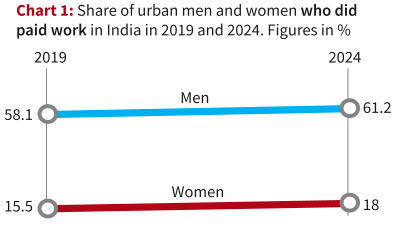
Rise in Unpaid Household Work
- Women doing unpaid domestic work: Increased from 3% in 2019 to 81% in 2024.
- Men doing unpaid domestic work: Increased from 23% in 2019 to 5% in 2024.
- Unpaid domestic work includes household accounting, purchasing goods, cooking, cleaning, waste disposal, and maintenance tasks.
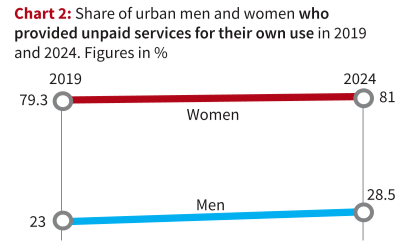
Care Work Responsibilities
- Women caring for children, elderly, and differently-abled: Increased from 9% in 2019 to 31.8% in 2024.
- Men in caregiving roles: Increased from 9% in 2019 to 17.3% in 2024.
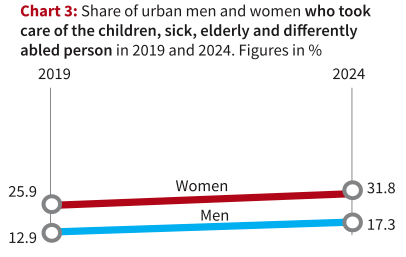
State-wise Gender Divide in Unpaid Work
- Across most States:
- Urban men in household chores: 20% to 40%.
- Urban women in household chores: 75% to 85%.
- North-eastern States show higher male participation in household work:
- Sikkim, Arunachal Pradesh, and Nagaland: Over 50% of men engage in household chores.
- Among major States, Kerala leads with 44% of men participating in domestic work.
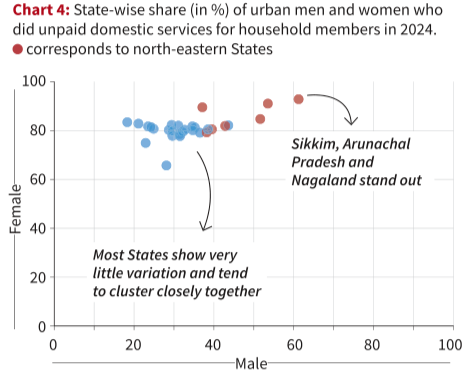
State-wise Gender Divide in Paid Work
- Across most States:
- Urban men in paid work: 55% to 65%.
- Urban women in paid work: 10% to 25%.
- Highest female workforce participation:
- Tamil Nadu: 25% of urban women engaged in paid work.
- Telangana: 24%.
- Karnataka: 22%.
- Himachal Pradesh: 23%.
- Lowest female workforce participation:
- Bihar: 9%.
- Uttar Pradesh: 10%.
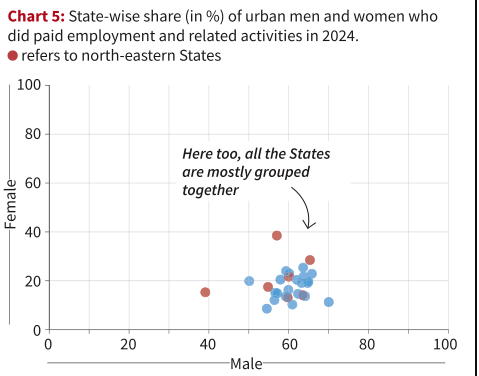
Conclusion
- Despite increasing participation in paid employment, most urban women continue to shoulder the majority of household responsibilities.
- The burden of balancing both professional and domestic work is particularly evident in Tamil Nadu, Telangana, Karnataka, and Himachal Pradesh, where over 80% of women handle household chores alongside employment.
- Gender disparity in unpaid domestic work remains stark, with male participation still significantly lagging behind.


 Job Deficit in India, Challenges and Gov...
Job Deficit in India, Challenges and Gov...
 Madrasa Education, History and Implicati...
Madrasa Education, History and Implicati...
 AI Literacy in India, Significance, Chal...
AI Literacy in India, Significance, Chal...





















